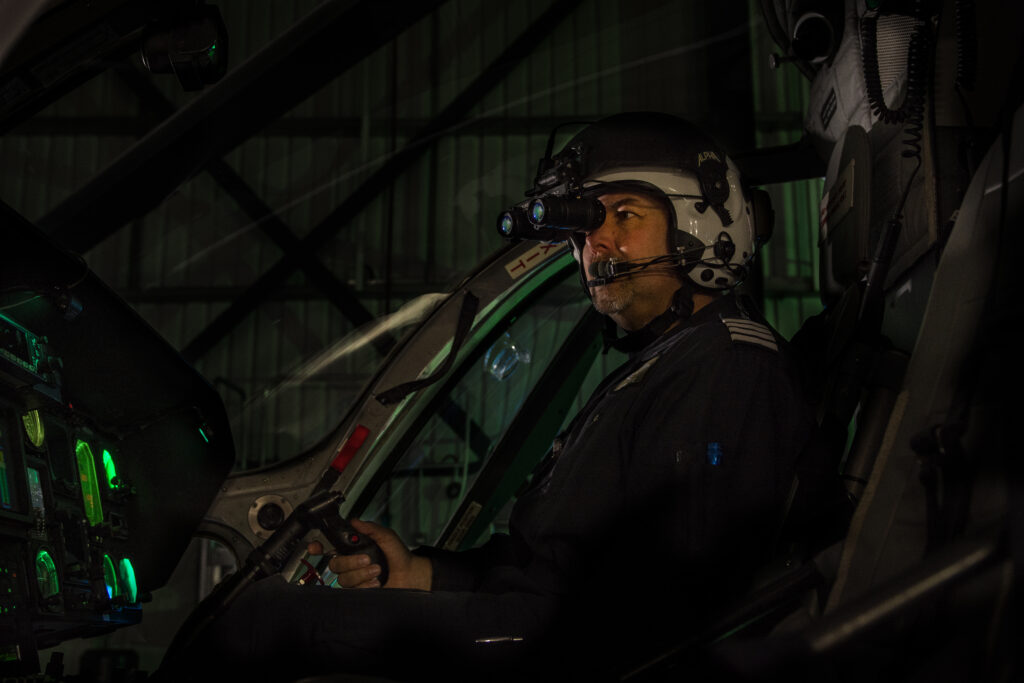Aircrew refresh night vision training

SEARCH BLOG POSTS
SEARCH BY CATEGORIES
SEARCH BY MONTH
With winter fast approaching, the crew are preparing to fly once again in the hours of darkness. After more than six months of flying only in daylight, they undergo training to refresh their skills on night take-off and landing.
After dark, the crew fly with night-vision goggles, which are mounted to their helmets. The goggles amplify ambient light, allowing them to see landing sites and identify any hazards. However, flying in darkness comes with greater restrictions than in the daytime.
On an emergency mission in daylight, the helicopter can land anywhere with a dimension twice the size of the helicopter. In darkness, the size of the landing spot increases, to allow for the extra risk that flying at night entails.
To prepare for the changes, the pilots spend several weeks taking the crew on training missions to secondary landing sites across Cornwall. These are pre-surveyed locations, which are known to be safe landing spots. You may have seen the helicopter somewhere in your local area recently on one of these flights.
Doug Pye, Chief Pilot for Cornwall Air Ambulance, said: “There is an increased risk flying in darkness. We could be landing at sites we have never been to before, which is fine in the summer months when we have plenty light, but it takes some prior preparation in winter. When a call comes in, we check the grid reference and establish a landing site, then we brief the landing site. All this is done in a matter of minutes, but it helps eliminate the risk before we set off on a mission.”
For the critical care paramedics, flying in darkness brings another challenge to treating a seriously sick or injured patient in the helicopter. They work in green light in-flight and one paramedic must stay in the front with the pilot at all times to help with navigation.
Steve Garvey, Air Operations Officer, said: “It is important that we refresh our night landing procedures in the Autumn and everyone has had time to hone their skills again.
“The night-vision goggles are fantastic, but they do take your vision from 3D to 2D, so all of us on board the helicopter must be extra vigilant for hazards when we are landing.
“From a clinical perspective, there is no change to the type of treatment our patients receive, but for the crew it is certainly a more challenging environment to work in.”